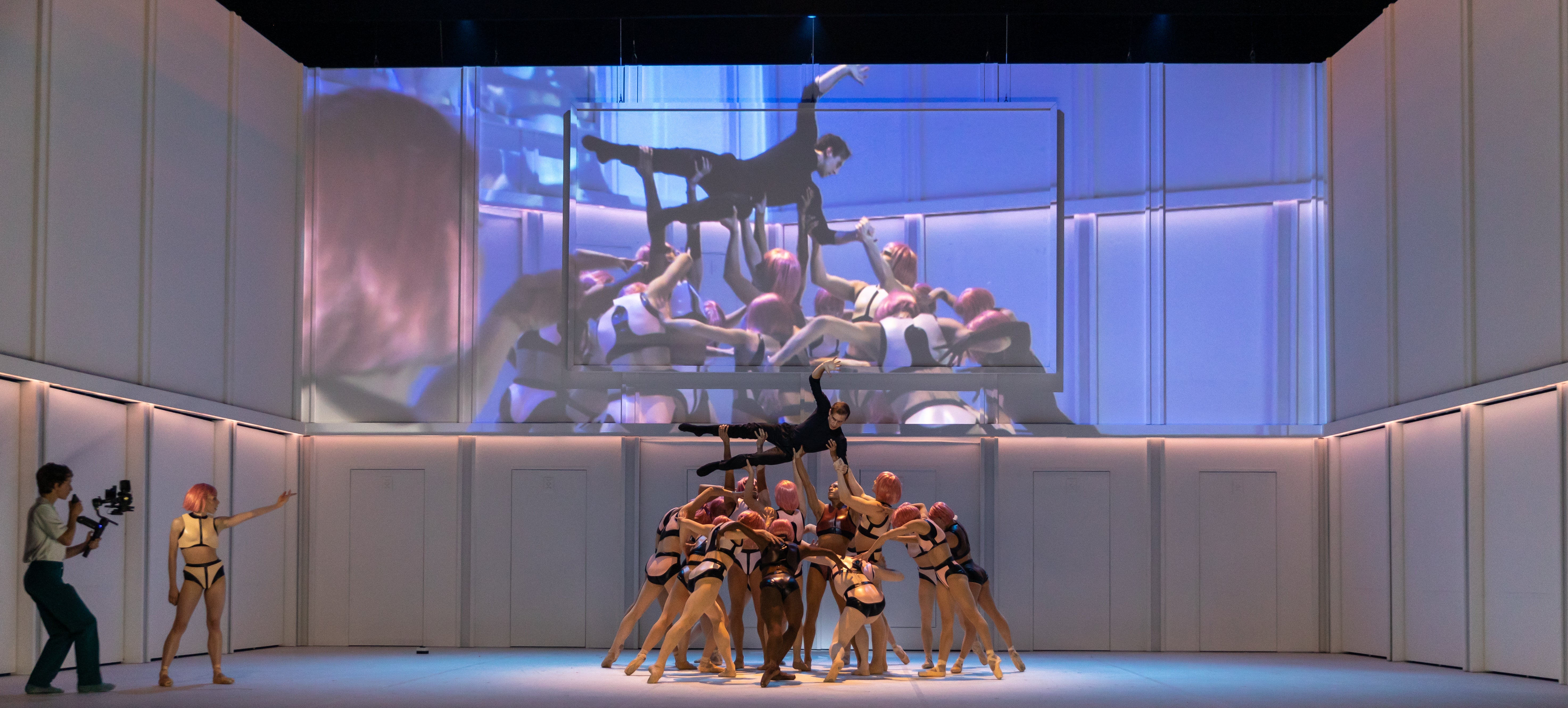Coppélia review: A sharp, smart take on a classic from Scottish Ballet
The Edinburgh Festival hit swaps clockwork dolls for artificial intelligence

Scottish Ballet’s sharp, smart Coppélia swaps clockwork dolls for artificial intelligence. Created in 2022, and already a hit at the Edinburgh Festival, Morgann Runacre-Temple and Jessica Wright’s production is a punchy update of the 19th-century ballet classic. From multimedia playfulness to robot clubbing, Scottish Ballet dance it with glee.
Runacre-Temple and Wright are an established partnership of direction and choreography, with a history of film as well as stage work. In Coppélia, dancer Rimbaud Patron is also an onstage cameraman, filming interactions or revealing what’s happening offstage. Film is projected onto screens, but refuses to stay there: the images spill right across Bengt Gomér’s spare, industrial set.
Unruly technology is a central theme in Coppélias old and new. The 19th-century Swanilda crept into a toymaker’s workshop, disguising herself as a doll that then seemed to come to life. Here, Constance Devernay is an investigative journalist pursuing a tech bro version of Doctor Coppélius, pulling her boyfriend Franz along to the launch of his Coppélia technology.
The new score, written by Mikael Karlsson and Michael P Atkinson, layers snatches of the Delibes original with an atmospheric mix of orchestral and electronic sound. Jean-Claude Picard conducts the Scottish Ballet Orchestra – but again, there’s a blurred line between what’s live and what’s recorded. Bruno Micciardhi’s Coppélius uses Delibes as a workout playlist, the music turning tinny when he takes out an earbud.
Devernay is poised in her “interview” scenes, providing the body language for Jeff James’s recorded script. The steps are all new, from fluid, loose-limbed moves for the naturalistic early scenes to more sculptural, athletic choreography for the AI world. Like her 19th-century counterpart, this Swanilda ends up in disguise, interacting with the onscreen Coppélia until the robot doll pinches her into the screen.
Runacre-Temple and Wright play with the creepiness of the doll fantasy, with a robot that can be programmed to love its owner. But they also make it a source of power for Swanilda, suddenly leading an army of digital copies.

Devernay’s bold lines are amplified by a physical corps de ballet, and by a kaleidoscope of filmed selves. It’s a very effective blend of dance and digital, with slanted, art deco angles suggesting something from Fritz Lang’s Metropolis.
And like the traditional ballet finale, it gives the ballerina a chance to show her strength: Devernay is commanding. It’s an exuberant performance from the whole company, who switch from bustling scientists to virtuoso cyborgs.
‘Coppélia’ runs at Sadler’s Wells Theatre until 5 March



Join our commenting forum
Join thought-provoking conversations, follow other Independent readers and see their replies
Comments